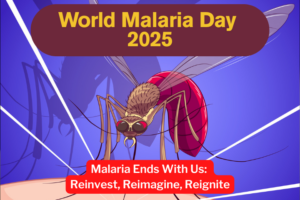Eight friends A, B, C, D, E, F, G and H are sitting in a straight line. Some of them are facing north while some of them are facing south. They all have birthday in different months viz. March, April, May, June, July, August, November and December but not necessarily in the same order.
A’s birthday is in June and he sits third from one of the extreme end of line. There are three persons sit between A and H. H’s birthday is in April. H does not sit at any of the extreme end of the line. G sits second to right of H. The one whose birthday is in July does not sit adjacent to one whose birthday is in April. B’s birthday is in July and he sits third to right of F, whose birthday is in March. C’s birthday is not in August. E’s birthday is not in November. B does not sit at any of the extreme end of the line. There are as many persons sit between C and the one whose birthday is in May as between D and the one whose birthday is in May. F faces south. D’s birthday is neither in November nor in August. Immediate neighbor of H faces same direction as of H(Same direction means if H faces north then both immediate neighbor of H faces north and vice-versa). C sits at one of the extreme end of line. G sits second to right of A and both faces same direction (Same direction means if A faces south then G also faces south and vice-versa). B sits second to right of D and both faces opposite direction (opposite direction means D faces north then B faces south and vice-versa).
Q1. Who among the following sits at extreme end of the line?
(a) C,F
(b) G,A
(c) F,B
(d) E,D
(e) Cannot be determined
Q2. Who among following sits third to right of C?
(a) D
(b) H
(c) A
(d) F
(e) None of these
Q3. Who among following sits exactly between D and B?
(a) E
(b) A
(c) F
(d) H
(e) None of these
Q4. Who among the following person has birthday in December?
(a) G
(b) B
(c) A
(d) D
(e) F
Q5. Who among following sits third to left of the one whose birthday is in May?
(a) The one whose birthday is in July
(b) The one whose birthday is in June
(c) The one whose birthday is in December
(d) The one whose birthday is in November
(e) None of these.
Directions (6-8): In each of these questions, there are five statements followed by five conclusions. Consider the given statements to be true even if they seem to be at variance with commonly known facts. Read all the conclusions and then decide which of the given conclusions does not logically follow from the given statements using all statements together.
Q6. Statements: Some girl is sky. All girl is fly. No sky is blue. All blue is pink. Some blue is red.
Conclusions:
(a) Some fly is sky.
(b) Some girl is not blue.
(c) Some pink is not sky.
(d) Some red is not sky.
(e) None of these
Q7. Statements: Some beauty is Sanskrit. All Sanskrit is English. Some English is math. All math is history. No history is science.
Conclusions:
(a) Some English is beauty.
(b) Some history is English.
(c) Some English is not science.
(d) No math is science.
(e) None of these.
Q8. Statements: Some man is thumb. All thumb is hand. No hand is hair. All eye is hair. Some hair is nose.
Conclusions:
(a) Some hand is man.
(b) No thumb is eye.
(c) No eye is hand.
(d) Some nose is not hand.
(e) Some nose is eye.
Directions (9-10): Study the following information carefully to answer the given questions:
Each of the six family members – A, B, C, D, E and F –are of different ages . C is older than D and E. B is older than F and C. F is younger than only two person. B is not oldest. The age of A and C is given as 72 year and 51 year respectively.
Q9. Which of the following could be the possible age of D?
(a) 51 year
(b) 40 year
(c) 86 year
(d) 71 year
(e) 55 year
Q10. Which of the following is true with respect to the given information?
(a) F is older than only two person.
(b) F is the oldest.
(c) D is younger than only one person.
(d) E is younger than only one person.
(e) None is true.
Q11.In a certain code ‘ke pa lo ti’ means ‘lamp is looking bright’ and ‘lo si ti ba ke’ means ‘bright light is from lamp’. Which of the following is the code for ‘looking’ in that language?
(a) si
(b)pa
(c)ti
(d)ke
(e) None of these
Directions (12-13): Read the following information carefully and answer the questions which follow.
If ‘A × B’ means ‘A is father of B’.
If ‘A + B’ means ‘A is wife of B’.
If ‘A ÷ B’ means ‘A is daughter of B’.
If ‘A – B’ means ‘A is son of B’.
Q12. How is Q related to L in the expression ‘L ÷ M × O – P ÷ Q’?
(a) Granddaughter
(b) Niece
(c) Daughter-in-law
(d) Daughter
(e) Cannot be determined
Q13. What will come in the place of the question mark, to establish that Q is the nephew of T in the expression ‘Q ? R ÷ S × T’?
(a) +
(b) ×
(c) –
(d) ÷
(e) Either – or ÷
Q14. Which of the following expressions may not be true if the expression ‘Z ≥ Y = W ≤ X’ is definitely true?
(a) W ≤ Z
(b) X ≥ Z
(c) Y ≤ X
(d) Both (b) and (c)
(e) All are true
Q15. In which of the following expressions does the expression ‘A > D’ hold true?
(a) A = B < C ≤ D
(b) D ≥ B > C > A
(c) B = D > C ≥ A
(d) A ≥ C > B = D
(e) D ≤ B > A > C





 GA Capsule for SBI Clerk Mains 2025, Dow...
GA Capsule for SBI Clerk Mains 2025, Dow...
 The Hindu Review October 2022: Download ...
The Hindu Review October 2022: Download ...
 World Malaria Day 2025
World Malaria Day 2025




